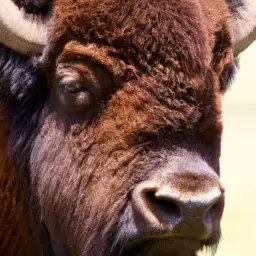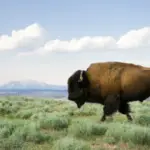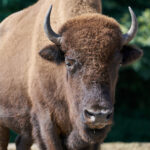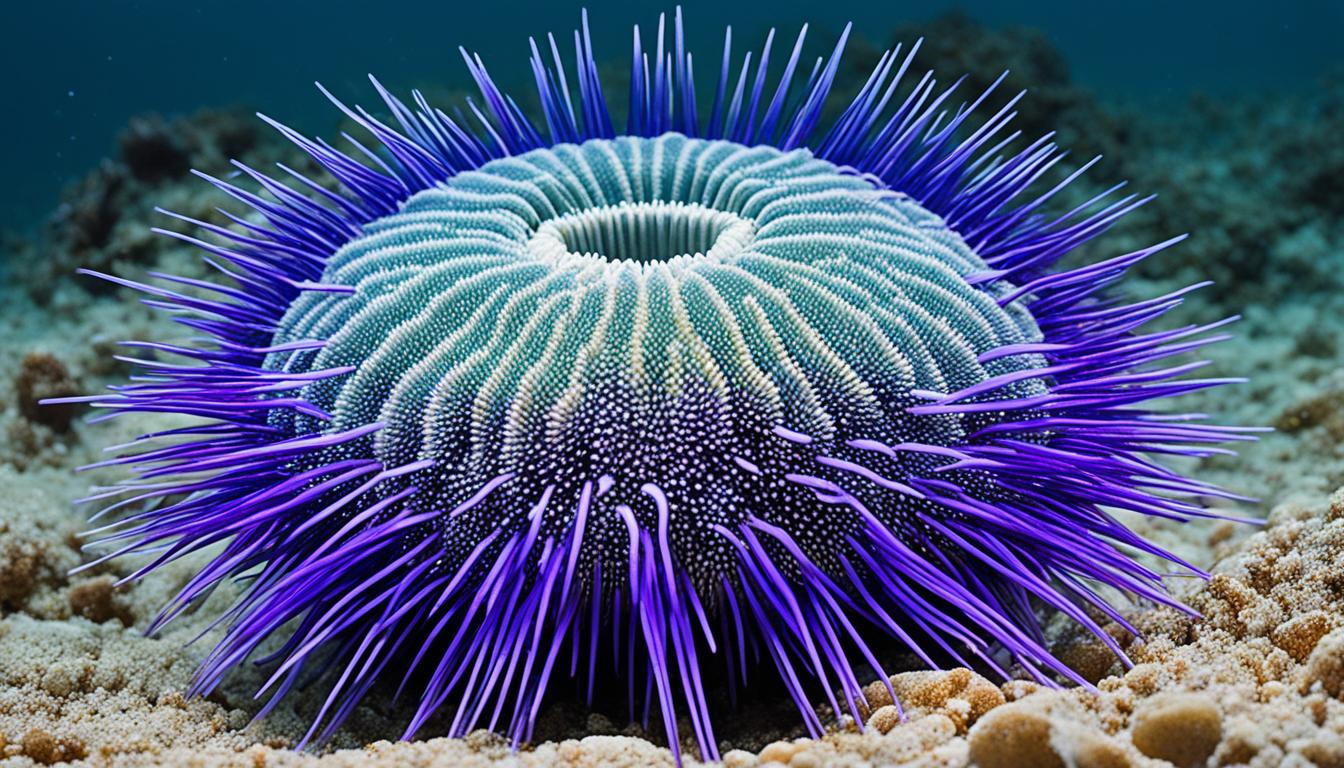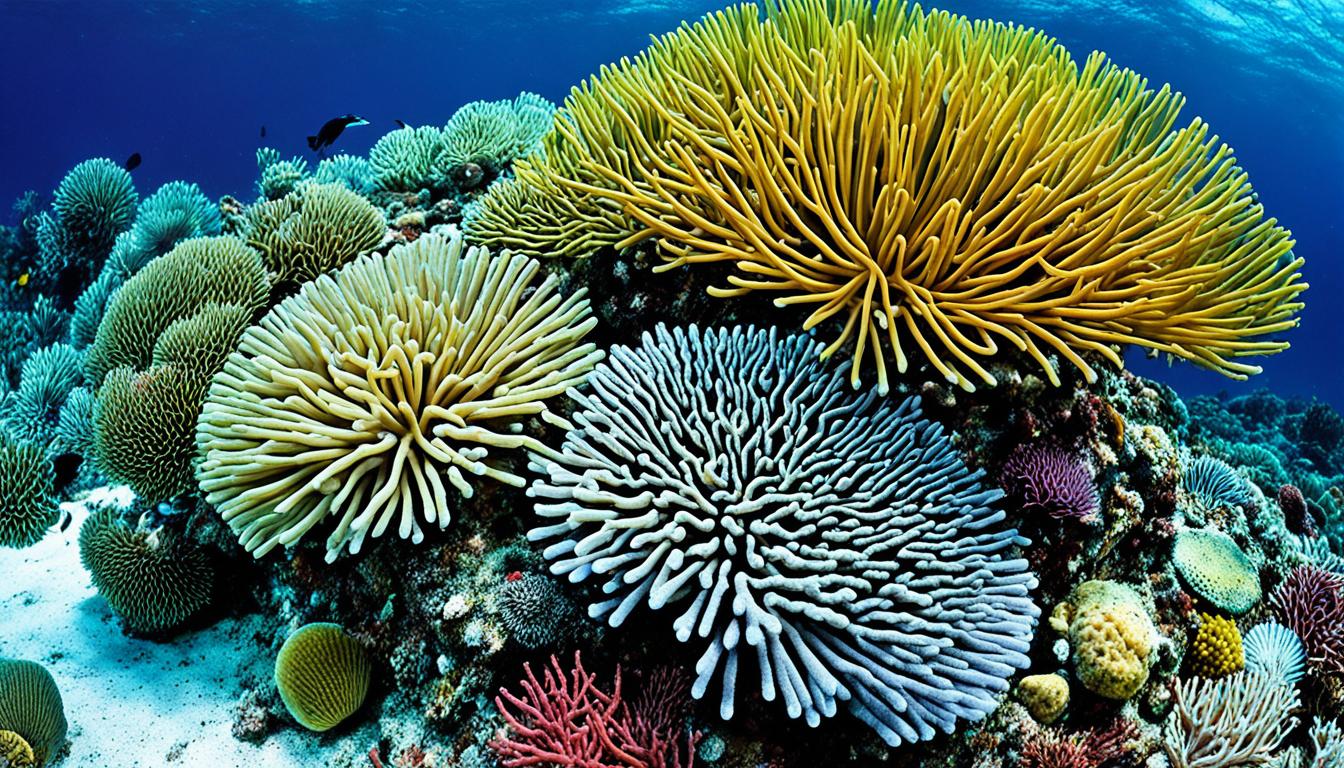Are you an animal lover or someone who is simply curious about the wildlife in Colorado? Look no further, because “Where Can I See Bison In Colorado” has got you covered. This informative guide will take you on a journey through the breathtaking landscapes of Colorado, providing you with all the essential information you need to spot these majestic creatures in their natural habitat. Whether you’re a seasoned wildlife enthusiast or a first-time adventure seeker, this product will help you navigate through the vast expanses of Colorado and ensure an unforgettable encounter with bison. Get ready to embark on an incredible wildlife adventure like no other.
Bison in Colorado: An Overview
Colorado is home to a thriving population of bison, also known as American buffalo. These magnificent creatures have a rich history in the state, and their presence adds to the natural beauty and wildlife diversity of Colorado. In this article, we will explore various locations where you can spot bison, learn about their habitat and lifestyle, and discover ways to contribute to their conservation efforts.
Understanding the habitat and lifestyle of bison
Bison are large, herbivorous mammals that typically inhabit grasslands, prairies, and meadows. They have a sturdy build, with a hump on their shoulders, a massive head, and a distinctive beard. These impressive animals have played a significant role in shaping the ecosystems of North America for thousands of years.
Bison are well adapted to survive in Colorado’s diverse landscapes. They can be found in both lowland and highland regions, including grasslands, meadows, and mountainous areas. These animals require ample grazing land, access to water sources, and a variety of vegetation to fulfill their dietary needs.
In terms of lifestyle, bison prefer to live in large herds, led by the dominant bull. Each herd typically consists of cows, calves, and sub-dominant bulls. They have a social structure that promotes cooperation and protection from predators. Bison are also known for their strong sense of smell, excellent hearing, and remarkable agility despite their size.
History of bison in Colorado
Bison have a long and storied history in Colorado, dating back to the time when Native American tribes roamed the land. The Plains Indians, such as the Cheyenne, Arapaho, and Lakota Sioux, relied heavily on bison for various aspects of their lives. These tribes hunted bison for food, clothing, shelter, and ceremonial purposes. The bison’s meat, hides, bones, and other parts were utilized efficiently and sustainably. Unfortunately, with the westward expansion of European settlers and the advent of commercial hunting, the bison population in Colorado and across the United States severely declined.
Efforts to restore the bison population began in the early 20th century. By the late 20th century, bison conservation initiatives gained momentum, resulting in the resurgence of bison populations in Colorado and other parts of the country. Today, bison are considered a symbol of the American West and a testament to the resilience of these magnificent creatures.
Current population of bison in Colorado
Thanks to successful conservation initiatives, the population of bison in Colorado has seen significant growth in recent years. According to the Colorado Parks and Wildlife, there are approximately 600-800 bison in the state, spread across various public and private lands.
These populations are carefully managed to ensure their long-term viability and sustainability. The state promotes responsible stewardship and conservation practices, working collaboratively with landowners, ranchers, and wildlife organizations. This collective effort aims to maintain healthy populations of bison while protecting their habitats and promoting genetic diversity.
Rocky Mountain Arsenal National Wildlife Refuge
Situated just outside of Denver, the Rocky Mountain Arsenal National Wildlife Refuge offers visitors a unique opportunity to observe bison in a natural setting. This 15,000-acre refuge is home to one of the largest and most genetically pure bison herds in the United States.
Location and accessibility of the refuge
The Rocky Mountain Arsenal National Wildlife Refuge is conveniently located northeast of Denver, approximately 10 miles from downtown. It is easily accessible by car, with parking available near the refuge’s visitor center. The refuge is open to the public year-round, providing ample opportunities for bison viewing and exploring the surrounding wildlife habitat.
Best time to spot bison
To increase your chances of spotting bison at the Rocky Mountain Arsenal National Wildlife Refuge, it is advisable to visit during the early morning or late afternoon. During these times, the bison are more active and visible, grazing in the open grasslands or resting near ponds and waterways.
It’s important to remember that the refuge is a protected area, and visitors are required to stay on designated trails and observation areas. This ensures the safety of both visitors and wildlife, while minimizing disturbance to the bison and their habitat.
Other wildlife present in the refuge
The Rocky Mountain Arsenal National Wildlife Refuge is not only home to bison but also provides sanctuary for a wide range of other wildlife species. Visitors may have the opportunity to see mule deer, coyotes, prairie dogs, bald eagles, and a diverse array of bird species. The refuge offers numerous walking and biking trails, allowing visitors to immerse themselves in the natural beauty and wildlife diversity of this unique ecosystem.
Genesee Park
Situated in the foothills of the Rocky Mountains, Genesee Park is another popular location for bison viewing in Colorado. This picturesque park offers stunning scenic views, along with the chance to observe bison in their natural habitat.
Bison herds at Genesee Park
Genesee Park is home to a resident herd of bison, which can be seen grazing in the open meadows as you drive through the park. This iconic herd serves as a reminder of the historical significance of bison in Colorado and the West. The park provides a safe and protected environment for these majestic animals, allowing visitors to witness their beauty and observe their natural behaviors from a safe distance.
Park amenities and things to do
In addition to bison viewing, Genesee Park offers a range of amenities and activities for visitors. There are picnic areas, hiking trails, and interpretive signs that provide information about the park’s natural and cultural history. Whether you want to explore the trails, have a picnic with family and friends, or simply enjoy the picturesque views, Genesee Park has something for everyone.
Safety instructions for bison sighting
While Genesee Park provides opportunities for close encounters with bison, it’s essential to prioritize safety and respect for these wild animals. Bison may appear calm and docile, but they are still powerful and unpredictable creatures. Visitors should keep a safe distance of at least 25 yards from the bison and avoid any sudden movements or loud noises that could startle or agitate them. It’s crucial to observe the bison from a designated viewing area or from within your vehicle to ensure both your safety and the well-being of the animals.
Daniel’s Park in Douglas County
Nestled in the foothills of the Front Range, Daniel’s Park offers a scenic and historic setting for bison viewing. This expansive park provides breathtaking panoramic views of the surrounding mountains, along with the opportunity to witness bison in their natural environment.
History of bison at Daniel’s Park
Daniel’s Park has a colorful history closely tied to bison. Originally owned by the Daniels-Nunn Land and Cattle Company, the park was a working ranch that utilized bison herds. Today, visitors can see descendants of those original bison herds grazing in the park’s open meadows.
Activities to do at Daniel’s Park
In addition to encountering bison, Daniel’s Park offers a range of recreational activities for visitors. The park has picnic areas, walking trails, and expansive grassy areas for outdoor games and relaxation. It’s an ideal location for a family outing, a peaceful picnic with friends, or a tranquil hike in nature’s beauty.
Important regulations for visitors
When visiting Daniel’s Park, it’s crucial to follow the park’s regulations to ensure the safety of both visitors and wildlife. Visitors are required to stay on designated trails and viewing areas and refrain from approaching or feeding the bison. These guidelines are in place to protect the natural behavior and well-being of the bison, while also ensuring a positive and safe experience for all visitors.
Wild Animal Sanctuary in Keenesburg
For a unique and immersive bison viewing experience in Colorado, the Wild Animal Sanctuary in Keenesburg offers an unparalleled opportunity. This sanctuary is dedicated to providing a safe and natural habitat for rescued animals, including bison.
Sanctuary’s mission in bison conservation
The Wild Animal Sanctuary is committed to the conservation of bison and other wildlife species. Their mission revolves around rescuing and rehabilitating animals that have been mistreated, abused, or abandoned. By providing a spacious and natural sanctuary, the organization aids in the physical and emotional recovery of these animals, while also raising awareness about the importance of wildlife conservation.
Experiences offered to see bison
The Wild Animal Sanctuary allows visitors to observe bison from the unique vantage point of elevated walkways. These walkways provide an unobtrusive viewing experience, allowing visitors to witness bison in a natural setting while maintaining a safe distance. The sanctuary also offers guided tours and educational programs that provide valuable insights into the lives of these incredible animals and the conservation efforts being undertaken to protect them.
Visitor information for Wild Animal Sanctuary
Before visiting the Wild Animal Sanctuary, it is advisable to check their website for important information such as opening hours, visitor guidelines, and ticket reservations. The sanctuary is committed to ensuring the well-being of their animals and visitors, and it’s essential to adhere to their guidelines to have a safe and enjoyable experience.
The Rocky Mountain National Park
Nestled in the heart of the Rocky Mountains, the Rocky Mountain National Park is a haven for outdoor enthusiasts and wildlife enthusiasts alike. While bison sightings in the park are less common compared to other locations in Colorado, there is still a possibility of spotting these majestic creatures.
Likelihood of bison sighting in the park
Although bison were historically present in the region, they were extirpated from the Rocky Mountain National Park in the late 1800s. Efforts to reintroduce bison into the park have been limited, and currently, there is not a resident herd within the park’s boundaries. However, occasional visits by individual bison from neighboring herds have been reported, offering a unique and unexpected sighting for fortunate visitors.
Best viewing spots within the park
If you’re hoping to spot bison in the Rocky Mountain National Park, your best chance lies in the Kawuneeche Valley on the park’s west side. This area serves as a corridor for wildlife movement, and bison seeking new territories may occasionally pass through. Keep in mind that bison sightings in the park are rare, and it’s always advisable to consult with park rangers or check the park’s website for any recent sightings or alerts.
Campgrounds and accommodations nearby
For those planning an extended visit to the Rocky Mountain National Park, there are several campgrounds and accommodations available in the nearby towns of Estes Park and Grand Lake. These towns offer a range of options, including campgrounds, lodges, and cabins, allowing visitors to immerse themselves in the natural beauty and tranquility of the park while enjoying comfortable accommodations.
Elk and Bison Viewing at Cripple Creek
Cripple Creek, a historic mining town nestled in the heart of the Colorado Rockies, offers visitors the opportunity to view both elk and bison in their natural surroundings. This unique combination of wildlife can be observed in designated viewing areas near the town.
The difference between elk and bison
While both elk and bison are impressive and iconic animals, there are distinct differences between the two. Elk, also known as wapiti, are large deer-like mammals with majestic antlers. They are known for their agility, speed, and impressive vocalizations during mating season. Bison, on the other hand, are much larger and sturdier animals, with a distinctive hump on their shoulders and a thick coat of fur. While elk and bison may share similar habitats, they have different behavioral characteristics and dietary preferences.
Best time for viewing
Cripple Creek is known for its excellent elk and bison viewing opportunities during the fall rutting season. The rutting season, which takes place from September to October, is when male elk and bison compete for mates, displaying magnificent behaviors such as bugling and sparring. During this time, the chances of observing these majestic creatures in action are greatly increased, making it an ideal time for wildlife enthusiasts to visit and witness this natural spectacle.
Activities around Cripple Creek
Cripple Creek offers more than just wildlife viewing. This historic mining town provides a range of attractions and activities for visitors. Explore the museums and heritage centers that shed light on the town’s rich history, or try your luck at one of the many casinos that have become synonymous with the area. Whether you’re interested in history, outdoor adventures, or immersing yourself in the local culture, Cripple Creek has something to offer for everyone.
Colorado State Forest Service Public Areas
Colorado State Forest Service manages several public lands that are home to bison populations. These areas provide ample opportunities to view these magnificent creatures in their natural habitats.
Bison populations in State Forest Service public lands
Colorado State Forest Service actively manages bison populations in various public lands throughout the state. These lands include the State Forest State Park and other areas managed by the agency. The bison populations are carefully monitored to ensure their well-being and promote healthy ecosystems.
Locations for optimal bison viewing
For optimal bison viewing in areas managed by the Colorado State Forest Service, State Forest State Park is a recommended destination. This expansive park offers stunning natural landscapes and tranquil environments for observing bison in their natural habitat. Keep in mind that specific locations within the park may have restricted access during certain times of the year to protect sensitive habitats or ensure the safety of visitors and wildlife.
Policy regarding wildlife photography and observation
When visiting Colorado State Forest Service public lands to view bison, it’s important to remember that these are wild animals in their natural environment. Visitors should adhere to established guidelines for wildlife photography and observation, ensuring that they do not disturb or approach the animals closely. Photography should be conducted from a safe distance, preferably with telephoto lenses, to avoid unnecessary stress to the animals.
Bison Ranches and Farms in Colorado
For a more immersive and educational experience, consider visiting private bison ranches and farms in Colorado. These operations provide a closer look at bison ranching practices while offering unique opportunities to observe these magnificent creatures up close.
Exploring private bison ranching operations
Private bison ranches and farms give visitors the chance to experience bison herds and learn about bison ranching practices. These operations often provide guided tours and educational programs that offer insights into the daily routines of bison, their role in sustainable agriculture, and the conservation efforts associated with private ranching.
Rules and regulations for visitors
When visiting private bison ranches and farms, it’s important to respect the rules and regulations set by the operators. These rules are in place to ensure visitor safety, protect the well-being of the animals, and maintain the integrity of the operation. Visitors should adhere to guidelines regarding proper behavior, viewing locations, and interaction with the animals. By following these rules, visitors can have a rewarding and educational experience, while also contributing to the conservation efforts and sustainability of private bison ranching.
Ranches that offer guided tours for bison sighting
Several private ranches in Colorado offer guided tours specifically designed to give visitors an up-close encounter with bison. These tours often provide opportunities to learn about bison husbandry, the history of the ranch, and the importance of bison in conservation and sustainable agriculture. Some ranches may also offer opportunities for feeding or petting the bison under professional supervision, adding an extra level of immersion and education to the experience.
What are the best locations to spot bison in Colorado?
Colorado is home to some of the best bison viewing spots in the country. One of the top locations to spot these magnificent animals is at the Rocky Mountain Arsenal National Wildlife Refuge. Additionally, you can also visit the Tallgrass Prairie National Preserve for a chance to see bison in their natural habitat.
Contributing to Bison Conservation Efforts in Colorado
Bison conservation efforts in Colorado rely on the support and dedication of various organizations and individuals. As a tourist, there are several ways you can contribute to these efforts and help ensure the long-term survival and well-being of bison populations.
Organizations working for bison conservation
Colorado is home to several organizations that are actively involved in bison conservation. These organizations work to protect and restore bison habitats, promote sustainable ranching practices, and raise awareness about the importance of preserving these iconic animals. Supporting these organizations through donations or volunteer work can make a significant difference in their conservation efforts.
How can tourists contribute to these efforts
Visitors to Colorado can contribute to bison conservation efforts in several ways. One of the most effective ways is by practicing responsible and sustainable tourism. This includes following established rules and regulations when viewing bison, respecting their space, and minimizing human impact on their habitats. Additionally, supporting local businesses and organizations that prioritize bison conservation through your patronage or donations can also contribute positively to these efforts.
Adoption and sponsorship programs for bison
Some organizations offer adoption and sponsorship programs that allow individuals to personally contribute to the well-being and conservation of bison. Through these programs, individuals can provide financial support to specific bison and receive updates on their progress and well-being. These initiatives not only provide crucial funding for conservation efforts but also offer a unique and meaningful connection between individuals and the bison they help protect.
In conclusion, Colorado offers a range of locations and experiences for viewing and learning about bison. From public lands to private ranches, there are numerous opportunities to witness these majestic creatures in their natural habitats. By promoting responsible tourism, supporting conservation organizations, and participating in adoption and sponsorship programs, visitors can play a vital role in preserving and protecting the future of bison in Colorado. So, grab your binoculars and embark on a journey through the beautiful landscapes of Colorado to witness the magnificence of bison firsthand.

